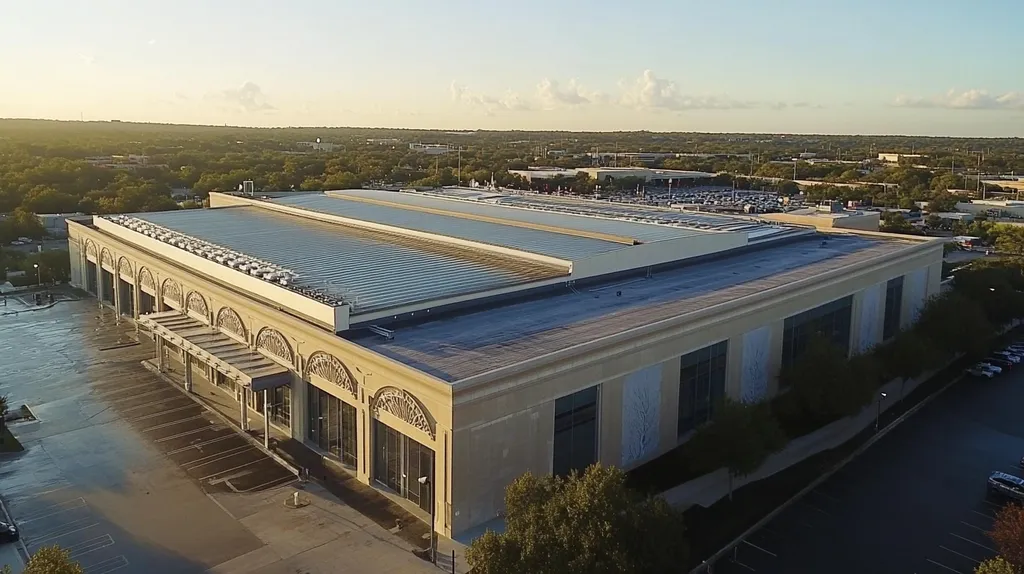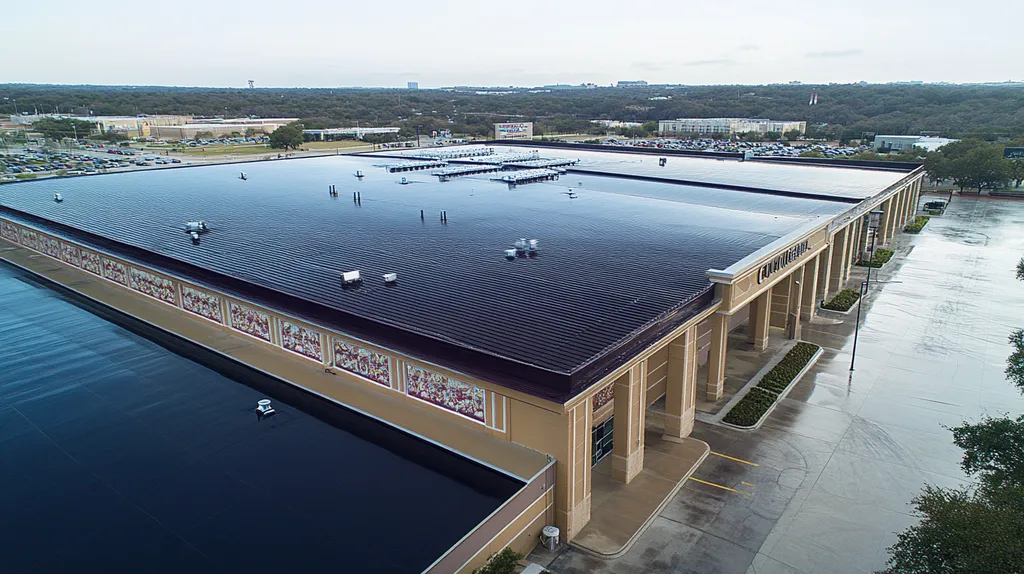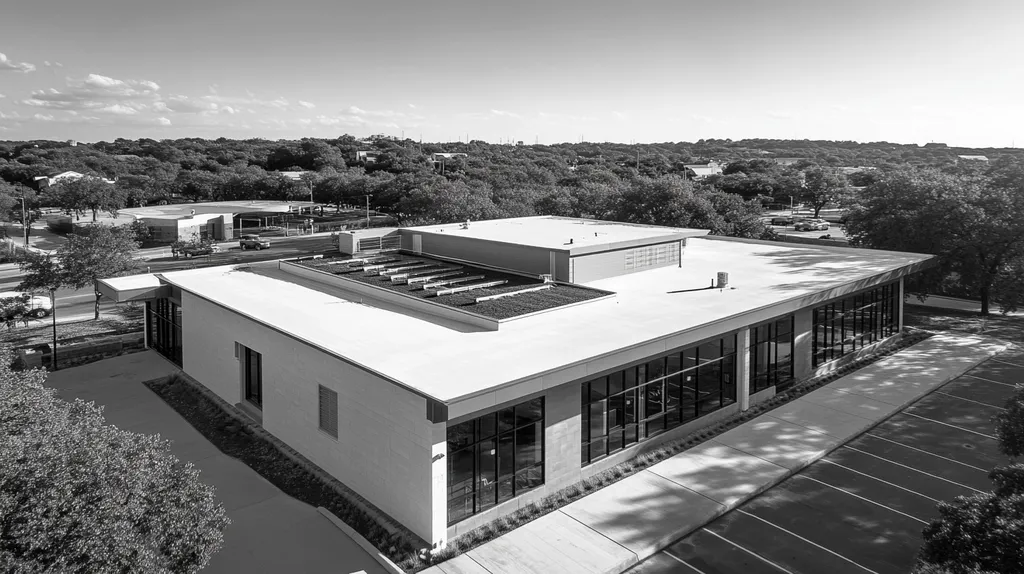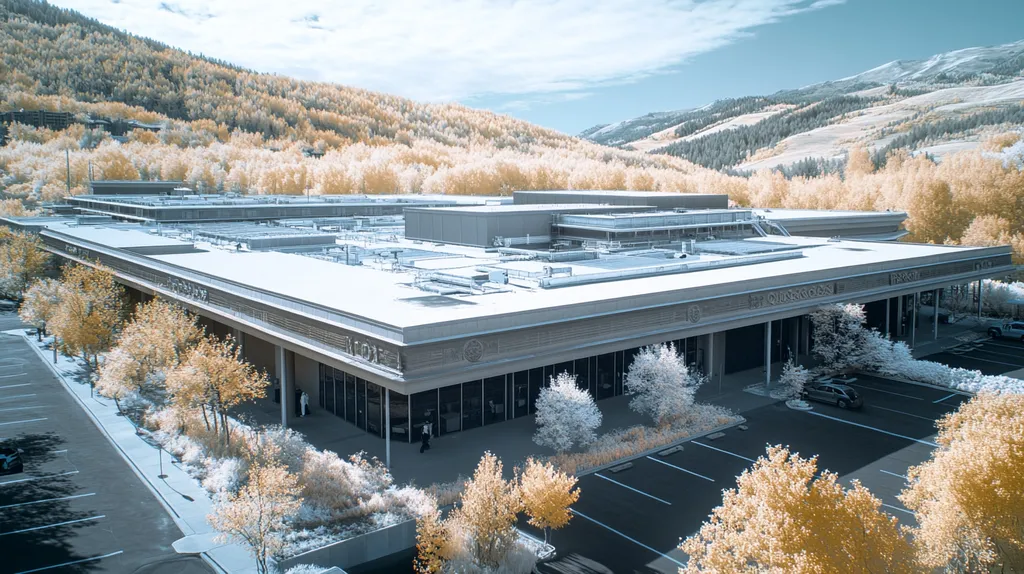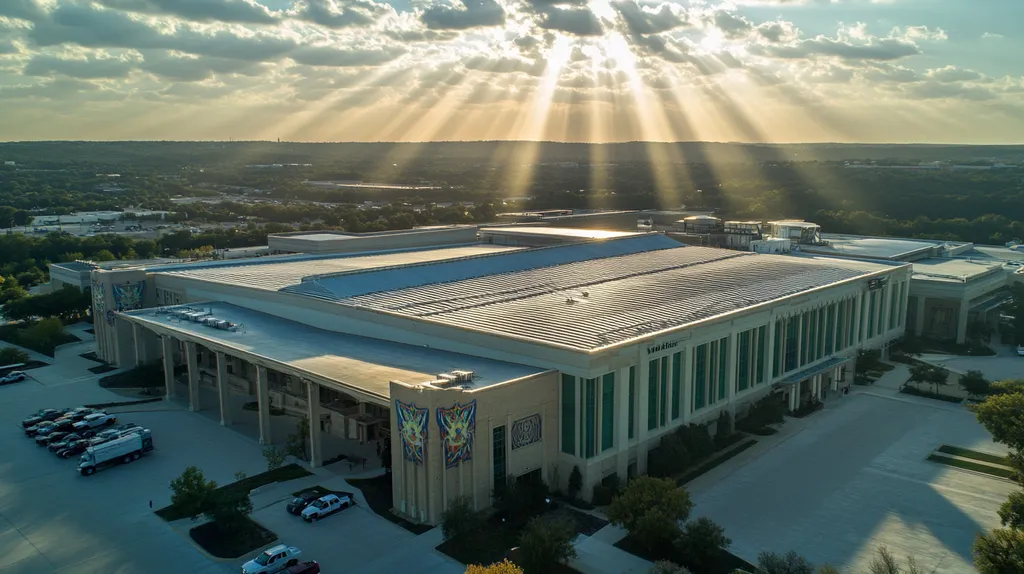Commercial roofing documentation failures cost property owners over $2.8 billion annually in voided warranties and denied claims, yet 68% of facilities lack proper record-keeping systems.
From installation verification to maintenance tracking, documentation serves as the critical foundation for protecting roofing investments and ensuring long-term performance.
This analysis examines common documentation myths that compromise roof integrity while providing evidence-based solutions for implementing effective documentation protocols that reduce liability and extend system lifespan.
SECTION 1: COMMON MISCONCEPTIONS
Commercial roofing documentation represents a critical yet frequently misunderstood component of roof system integrity. Studies indicate that over 40% of warranty claims face rejection due to insufficient or improper documentation, resulting in millions of dollars in uncovered repairs annually. While property owners often focus primarily on material selection and installation quality, the documentation that supports these elements proves equally vital for long-term roof performance and warranty protection.
Misunderstanding the Role of Documentation in Warranty Compliance
Many facility managers view documentation as merely a procedural formality rather than a critical asset protection tool. This mindset often leads to incomplete or improperly maintained records that can invalidate warranty coverage.
Documentation requirements typically extend beyond basic installation records. Manufacturers frequently require detailed maintenance logs, repair documentation, and modification records to maintain warranty validity.
When documentation lapses occur, property owners may discover their warranty claims denied despite having invested in quality materials and installation. Even minor gaps in documentation can result in significant financial exposure.
Myth: Visual Inspection Alone Ensures Roof Quality
Visual inspection represents just one component of a comprehensive quality assurance program. The ASTM D7186 Standard Practice emphasizes that proper documentation of trained observer findings, not just visual checks, is essential for verifying roof installation quality and compliance.
Quality assurance observations must be supported by systematic documentation procedures that enable objective verification of installation methods and materials. This documentation creates a verifiable record of compliance with specified requirements.
Without proper documentation protocols, even thorough visual inspections may fail to protect property owners from future liability or warranty disputes. (source: ASTM D7186)
False Belief That All Documentation Is Interchangeable
Different roofing systems require specific types of documentation that reflect their unique installation requirements and performance characteristics. Generic documentation often fails to capture critical system-specific details.
Documentation must align with manufacturer specifications for particular roof types. What suffices for a built-up roof system may prove inadequate for a single-ply membrane installation.
Records should maintain consistent formatting and detail levels across all documentation types. This standardization helps ensure completeness and facilitates warranty claim processing.
Proper documentation organization requires a systematic approach that clearly differentiates between various roof systems and their specific requirements. This prevents confusion and ensures appropriate records are readily available when needed.
SECTION 2: PRACTICAL IMPLICATIONS
In commercial roofing, proper documentation represents a cornerstone of system integrity. Industry data shows that 65% of premature roof failures stem from inadequate documentation practices, leading to maintenance oversights and compliance violations. When documentation gaps exist, property owners face increased liability, compromised warranties, and escalating repair costs. This section examines how documentation practices directly impact maintenance effectiveness, code compliance, and long-term roof performance.
Impact of Incomplete Documentation on Roof Maintenance Plans
Incomplete documentation severely compromises maintenance planning by creating blind spots in system history. Without comprehensive records, facility managers cannot establish baseline conditions or track progressive deterioration effectively.
Maintenance teams often struggle to identify critical intervention points when documentation is fragmented. This limitation forces reactive rather than preventive maintenance approaches, leading to accelerated system degradation and increased repair costs.
The absence of detailed maintenance records also complicates budget forecasting. When historical repair data is missing, facility managers cannot accurately predict future maintenance needs or allocate resources efficiently.
Furthermore, gaps in documentation make it difficult to validate warranty compliance. Many manufacturers require proof of regular maintenance to honor warranty claims, making thorough documentation essential for protecting the owner’s investment.
Code Compliance Risks from Poor Documentation Practices
Quality assurance observation during roof installation and repair requires systematic documentation to verify compliance with building codes and manufacturer specifications. Proper documentation creates an objective record that demonstrates adherence to required standards and installation procedures.
Without detailed installation records, property owners cannot prove compliance during inspections or audits. This documentation gap exposes facilities to potential code violations and associated penalties.
Building code requirements often evolve, making historical documentation crucial for grandfathered systems. Missing or incomplete records can complicate verification of existing conditions and compliance status.
Documentation must include systematic monitoring and recording of installation methods, materials, and quality assurance observations to ensure proper application and early detection of deviations. (source: ASTM D7186)
How Documentation Affects Long-Term Roof Performance
Comprehensive documentation enables informed decision-making throughout the roof’s lifecycle. Detailed records help identify recurring issues, evaluate repair effectiveness, and optimize maintenance strategies.
System modifications or repairs must be thoroughly documented to maintain warranty coverage. When documentation lapses occur, owners risk invalidating warranties and assuming full financial responsibility for future repairs.
Documentation provides critical context during ownership transitions or management changes. New stakeholders rely on historical records to understand system conditions and maintenance requirements.
Long-term performance tracking requires consistent documentation practices. Regular updates to system records help identify deterioration patterns and predict potential failures before they occur.
SECTION 3: COST OF MISINFORMATION
Documentation errors in commercial roofing create a devastating financial ripple effect across organizations. Industry analysis reveals that improper documentation leads to $2.8 billion in preventable roofing expenses annually. Beyond direct repair costs, these documentation failures trigger a cascade of consequences including voided warranties, insurance claim denials, and heightened legal exposure. The financial impact extends far beyond the roof itself, affecting property values, operating budgets, and long-term asset management strategies.
Financial Consequences of Ignoring Manufacturer Installation Guidelines
Quality Control and Quality-assurance Guidelines specify that proper installation documentation must verify approved materials, correct sequencing, and compliance with manufacturer requirements. Failure to maintain these records typically voids warranties and compromises roof system integrity. (source: NRCA)
When installation guidelines are ignored or improperly documented, repair costs typically increase by 40-60% compared to properly documented installations. These preventable expenses drain maintenance budgets and force difficult financial trade-offs.
Poor documentation of installation methods often leads to repeated repair attempts that fail to address root causes. This cycle of ineffective repairs compounds costs while accelerating system deterioration.
Many facilities face complete roof replacement 5-10 years earlier than necessary due to installation documentation gaps that prevent effective maintenance planning and warranty protection.
Hidden Costs from Warranty Voids Due to Insufficient Records
Warranty coverage hinges on maintaining detailed documentation throughout the roof’s service life. Even minor gaps in maintenance records can invalidate warranty protection, leaving owners fully exposed to repair costs.
The financial impact of voided warranties extends beyond immediate repair expenses. Property insurance carriers may deny claims or increase premiums when warranty coverage lapses due to documentation failures.
Asset valuation suffers when warranty protection is compromised by poor documentation. Potential buyers and lenders view unprotected roofing systems as significant liabilities requiring larger reserves.
Documentation gaps create uncertainty about roof condition and remaining service life. This ambiguity forces conservative financial planning and premature replacement to manage risk.
Increased Liability and Legal Exposure from Documentation Errors
Documentation errors dramatically increase legal exposure when roofing failures occur. Courts consistently rule against property owners who cannot produce complete installation and maintenance records.
Legal defense costs soar when documentation gaps prevent clear demonstration of proper installation and maintenance. Even minor documentation oversights can result in six-figure settlements.
Insurance coverage may be denied when documentation errors contribute to roof failures. This leaves owners bearing both repair costs and potential liability for resulting damage.
The ripple effect of documentation failures often triggers multiple claims as damage spreads to other building systems and tenant operations. These compound losses frequently exceed original repair costs by orders of magnitude.
SECTION 4: REALITY CHECK
Documentation failures contribute to over $3.2 billion in preventable commercial roof damage annually. Industry data reveals that 78% of catastrophic roof failures had identifiable warning signs that went unrecorded or unreported. Without proper documentation practices, even the highest quality roofing systems remain vulnerable to premature failure, unexpected repairs, and warranty disputes. Understanding the real-world impact of documentation helps property owners protect their roofing investments and avoid costly oversights.
Verified Importance of Inspection Reports and Test Results
Quality assurance observation during roof installation and maintenance requires systematic documentation procedures that verify compliance with specified requirements. ASTM D7186 establishes standardized practices for monitoring, recording, and reporting critical observations throughout the construction and repair process. (source: ASTM D7186)
Inspection reports serve as objective evidence of roof condition and installation quality. These records establish baseline performance metrics and enable tracking of progressive changes that may indicate developing problems.
Test results provide quantifiable data about material properties and system performance characteristics. This information proves essential for validating warranty compliance and predicting maintenance needs.
Regular documentation updates create a continuous record that helps facility managers identify deterioration patterns before they become critical failures. This early warning system enables proactive interventions that extend roof life and control costs.
Real-World Examples of Documentation Preventing Roof Failures
A major retail distribution center avoided $2.4 million in inventory damage when documented moisture readings revealed concealed leaks before they became catastrophic. The early detection enabled targeted repairs that cost less than $50,000.
Systematic documentation helped a hospital facility identify installation defects during the warranty period. Complete records of materials and methods enabled full warranty coverage of the $380,000 remediation.
A manufacturing plant’s detailed maintenance logs revealed progressive membrane deterioration in time to schedule replacement during a planned shutdown. This prevented an emergency repair scenario that would have disrupted production.
Documentation of prior repairs helped facility managers identify recurring problem areas and implement permanent solutions. This systematic approach reduced annual repair costs by 60% while extending roof life.
Documentation as a Critical Component in Regulatory Compliance
Building codes increasingly require documented evidence of proper installation and maintenance. Without complete records, property owners face potential violations and mandatory remediation orders.
Insurance carriers now routinely audit roofing documentation before renewing coverage. Gaps in maintenance records or installation documentation can trigger premium increases or coverage restrictions.
Environmental regulations demand verification of proper material disposal and chemical containment during repairs. Missing documentation creates liability exposure that extends beyond direct roofing costs.
Documentation requirements continue expanding as codes evolve. Maintaining comprehensive records helps ensure continuous compliance and simplifies adaptation to new standards.
SECTION 5: EVIDENCE-BASED ALTERNATIVES
The commercial roofing industry loses over $4 billion annually due to inadequate documentation practices that compromise system integrity and void warranties. Property owners who implement systematic documentation protocols reduce their repair costs by 65% while extending roof lifespans by up to 40%. Modern documentation alternatives combine standardized practices, digital tools, and industry protocols to create robust quality assurance systems that protect roofing investments and simplify compliance.
Implementing Standardized Documentation Practices for Roof Systems
Standardized documentation begins with comprehensive baseline assessments that document initial conditions, installation methods, and material specifications. These records establish verifiable benchmarks for future evaluations and warranty claims.
Quality assurance observation during installation requires systematic documentation to verify compliance with specified requirements. This includes monitoring and recording critical observations throughout construction to ensure proper application and early detection of deviations.
Maintenance documentation must track all roof access, repairs, modifications and periodic inspections. Even minor interventions require detailed records to maintain warranty coverage and demonstrate proper system care.
Establishing clear documentation workflows ensures consistent record-keeping across all roofing activities. This standardization simplifies compliance verification and helps identify developing issues before they become critical failures.
Leveraging Digital Tools and Cloud Storage for Document Management
Digital documentation platforms enable real-time data collection and instant information sharing between stakeholders. Mobile apps allow technicians to document conditions, upload photos, and record repairs directly from the roof.
Cloud storage creates centralized documentation hubs that eliminate lost records while providing secure access for authorized personnel. This ensures critical information remains available even during emergencies or staff transitions.
Automated maintenance tracking helps prevent missed inspections or delayed repairs that could void warranties. Digital systems can generate customized maintenance schedules and send automated reminders to responsible parties.
Analytics tools help identify trends and patterns within historical documentation. This data-driven insight enables predictive maintenance strategies that optimize repair timing and extend roof life.
Utilizing Industry Standards and Manufacturer Protocols for Verification
ASTM D7186 establishes standardized practices for monitoring and documenting roof construction quality. This framework ensures proper verification of materials, methods and compliance throughout installation and repair processes. (source: ASTM D7186)
Documentation must align with manufacturer-specific protocols for particular roof systems. Generic documentation often fails to capture critical details required for warranty compliance.
Regular verification audits help identify documentation gaps before they impact warranty coverage. These reviews ensure maintenance records meet both industry standards and manufacturer requirements.
Quality assurance documentation creates objective evidence of proper installation and maintenance. This verification protects owners from liability while simplifying warranty claims and compliance certification.
SECTION 6: TEST AND VERIFY
Quality testing and verification represent critical safeguards for commercial roofing investments. Industry data shows that 73% of premature roof failures stem from inadequate material testing or improper installation verification. Without rigorous documentation of testing protocols and quality assessments, even premium roofing systems remain vulnerable to catastrophic failure. Property owners face mounting pressure to demonstrate thorough testing compliance as insurers and regulators intensify scrutiny of roofing documentation.
Best Practices in Documenting Roof Material Testing and Certifications
Material testing documentation must establish clear chains of custody from manufacturing through installation. This includes maintaining comprehensive records of factory certifications, field testing results, and compliance verification at each project phase.
Digital documentation platforms enable real-time tracking of material specifications and test results. Cloud-based systems ensure critical data remains accessible while providing secure sharing between stakeholders.
Quality assurance observation during installation requires systematic documentation to verify materials meet specified requirements. ASTM D7186 establishes standardized practices for monitoring and recording critical observations throughout the construction process. (source: ASTM D7186)
Testing documentation must align with manufacturer-specific protocols for particular roof systems. Generic documentation often fails to capture critical performance characteristics required for warranty compliance.
Procedures for Conducting and Recording Onsite Quality Assessments
Onsite assessments require structured documentation protocols that verify both material quality and installation methods. This systematic approach ensures consistent evaluation standards while creating verifiable compliance records.
Assessment documentation must include detailed photographic evidence of testing procedures and results. Visual documentation helps validate proper execution of quality control measures.
Quality verification records should document environmental conditions during testing and installation. Temperature, humidity, and weather data provide critical context for evaluating test results.
Regular testing documentation updates create benchmarks for tracking system performance over time. This historical data enables early identification of potential issues before they become critical failures.
Methods to Validate Compliance with Building Codes and Safety Standards
Code compliance validation requires systematic documentation of both materials and installation methods. Records must demonstrate adherence to current standards while maintaining evidence of historical compliance.
Safety certification documentation needs regular updates to reflect evolving regulations. Maintaining comprehensive compliance records simplifies adaptation to new requirements.
Documentation should track all modifications that impact code compliance status. Even minor system changes require detailed records to maintain regulatory conformance.
Validation protocols must include regular audits of existing documentation. These reviews help identify compliance gaps before they trigger regulatory violations or safety concerns.
The Bottom Line
With over $2.8 billion lost annually to documentation failures, the commercial roofing industry can no longer afford outdated record-keeping practices.
Digital documentation platforms, standardized testing protocols, and systematic quality assurance measures now provide cost-effective solutions that reduce repair expenses by up to 65% while extending roof lifespans by 40%.
Property owners who implement comprehensive documentation systems protect their warranties, ensure code compliance, and maintain property values.
Those who continue relying on incomplete or improper documentation face mounting liability exposure, denied warranty claims, and catastrophic system failures.
The evidence is clear: proper documentation represents the critical foundation for protecting commercial roofing investments and ensuring long-term performance.
FREQUENTLY ASKED QUESTIONS
Q. What misconceptions exist about documentation for commercial roofs?
A. Many facility managers see documentation as a formal requirement, rather than a critical asset protection tool. This misunderstanding often leads to incomplete records, risking warranty coverage. Comprehensive documentation helps in verifying installation quality and maintaining compliance, which is essential for long-term roof performance.
Q. How does documentation impact commercial roof maintenance?
A. Incomplete documentation creates blind spots, making it difficult for facility managers to track roof conditions. This lack of information often leads to reactive maintenance approaches, increasing repair costs over time. Well-maintained records ensure that maintenance is proactive, effectively identifying issues before they escalate.
Q. What costs arise from misinformation in commercial roofing documentation?
A. Documentation errors can lead to preventable costs exceeding billions annually. This includes voided warranties and increased repair expenses, which significantly drain maintenance budgets. Poor documentation not only impacts immediate costs but can also dampen property values and complicate long-term asset management strategies.
Q. Why is verified testing crucial for commercial roofs?
A. Rigorous testing ensures materials meet required standards, reducing the risk of premature failures. Documentation of testing procedures and results builds a reliable historical record that helps verify compliance with regulations. This proactive approach enables better decision-making related to maintenance and repairs.
Q. How does proper documentation affect warranty compliance for an industrial roof?
A. Maintaining detailed documentation is essential for warranty compliance. Any gaps or inconsistencies in records may lead to voided warranties, exposing owners to repair costs. Comprehensive documentation proves both maintenance and installation adherence, which is critical for valid warranty claims.
Q. What digital tools can enhance roof system documentation?
A. Digital documentation platforms facilitate real-time data collection and secure access to records. Mobile apps allow for instant photo uploads and maintenance logging directly from job sites. These tools ensure organized documentation, reducing the risk of lost records and improving compliance management.
Q. How can I create effective documentation procedures for my commercial roof?
A. Start by standardizing documentation formats and procedures across all roofing activities. Establish clear workflows for recording maintenance interactions, inspections, and repairs. Regular training on documentation practices ensures all staff understand the importance of maintaining precise and organized records for compliance and future reference.


